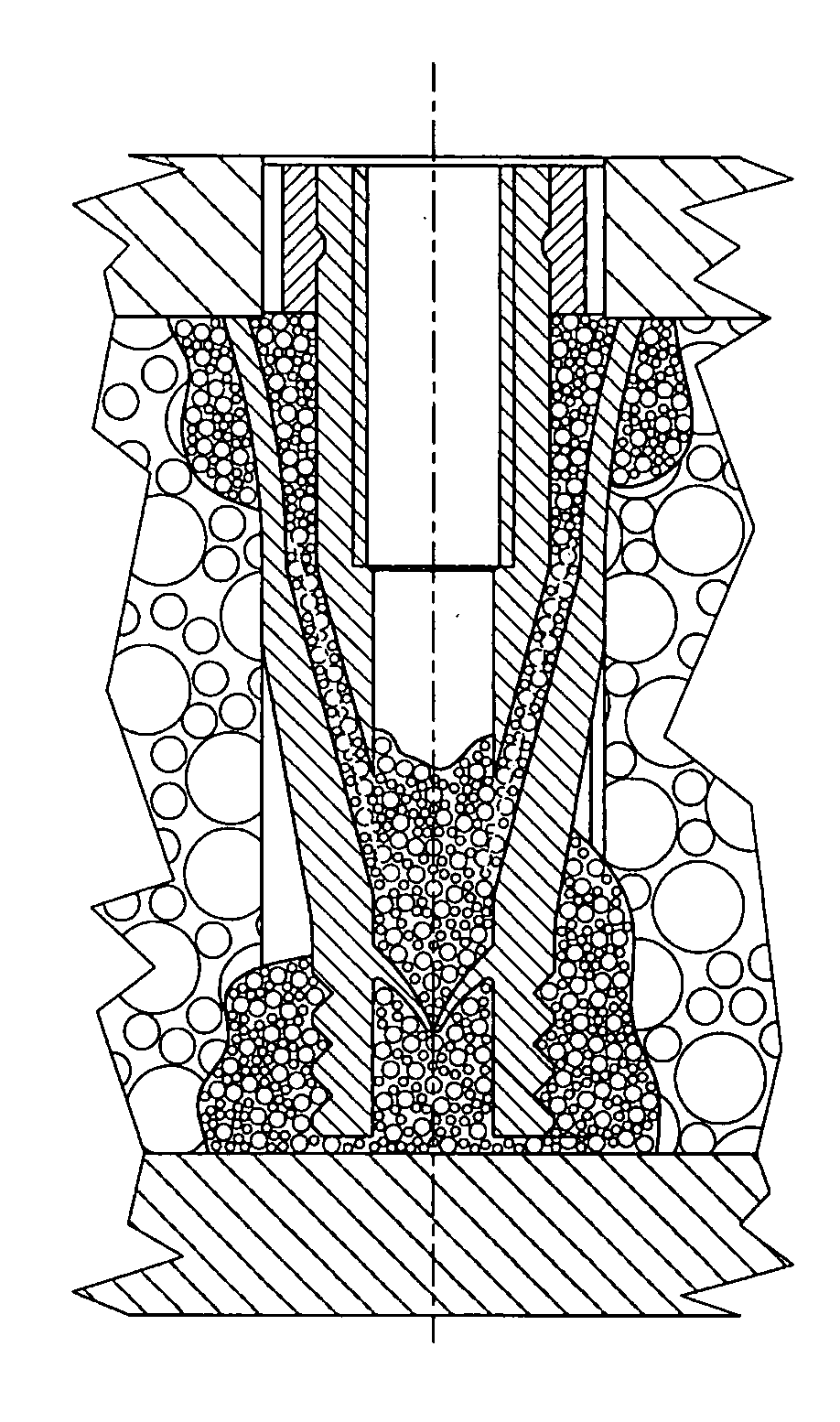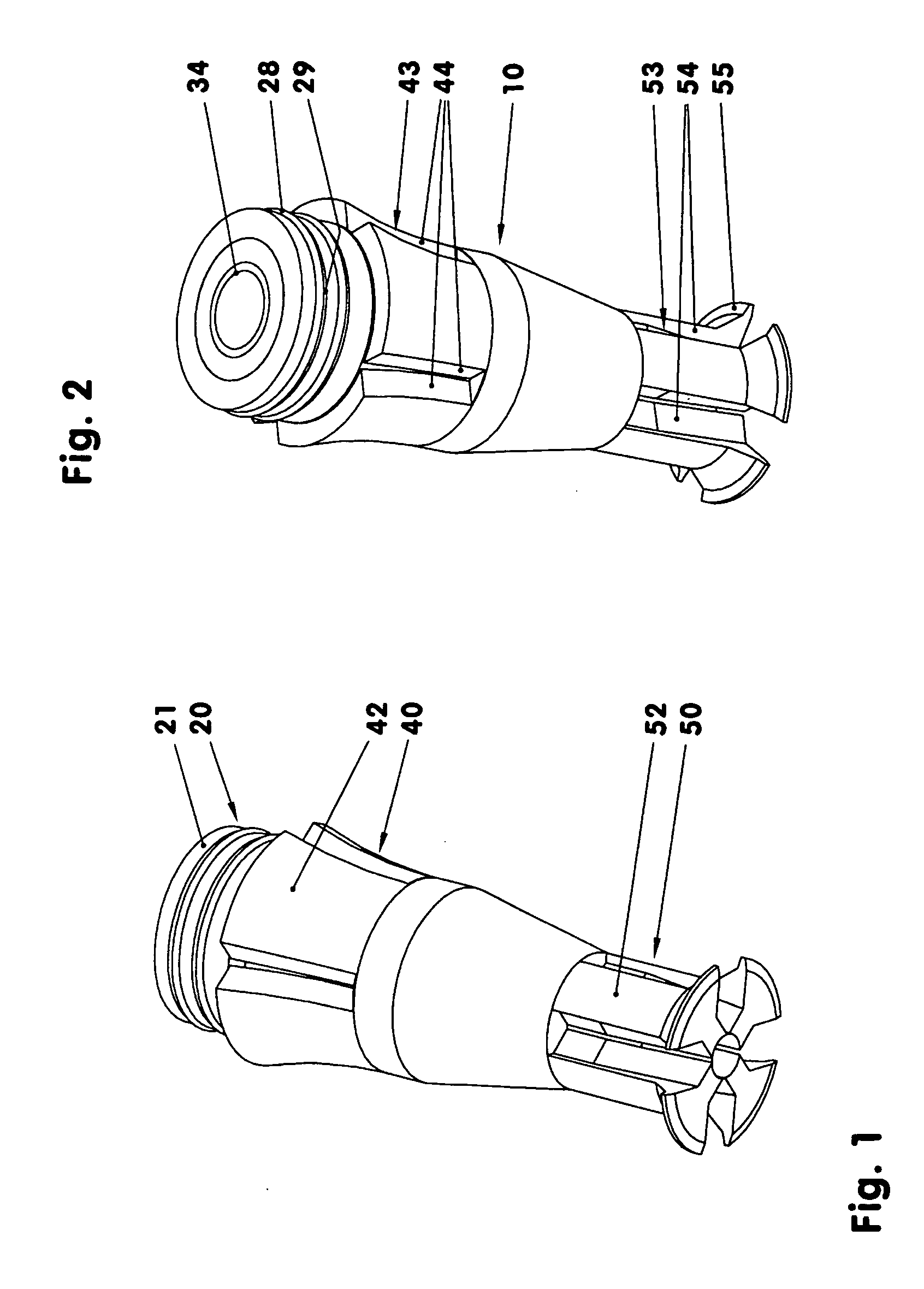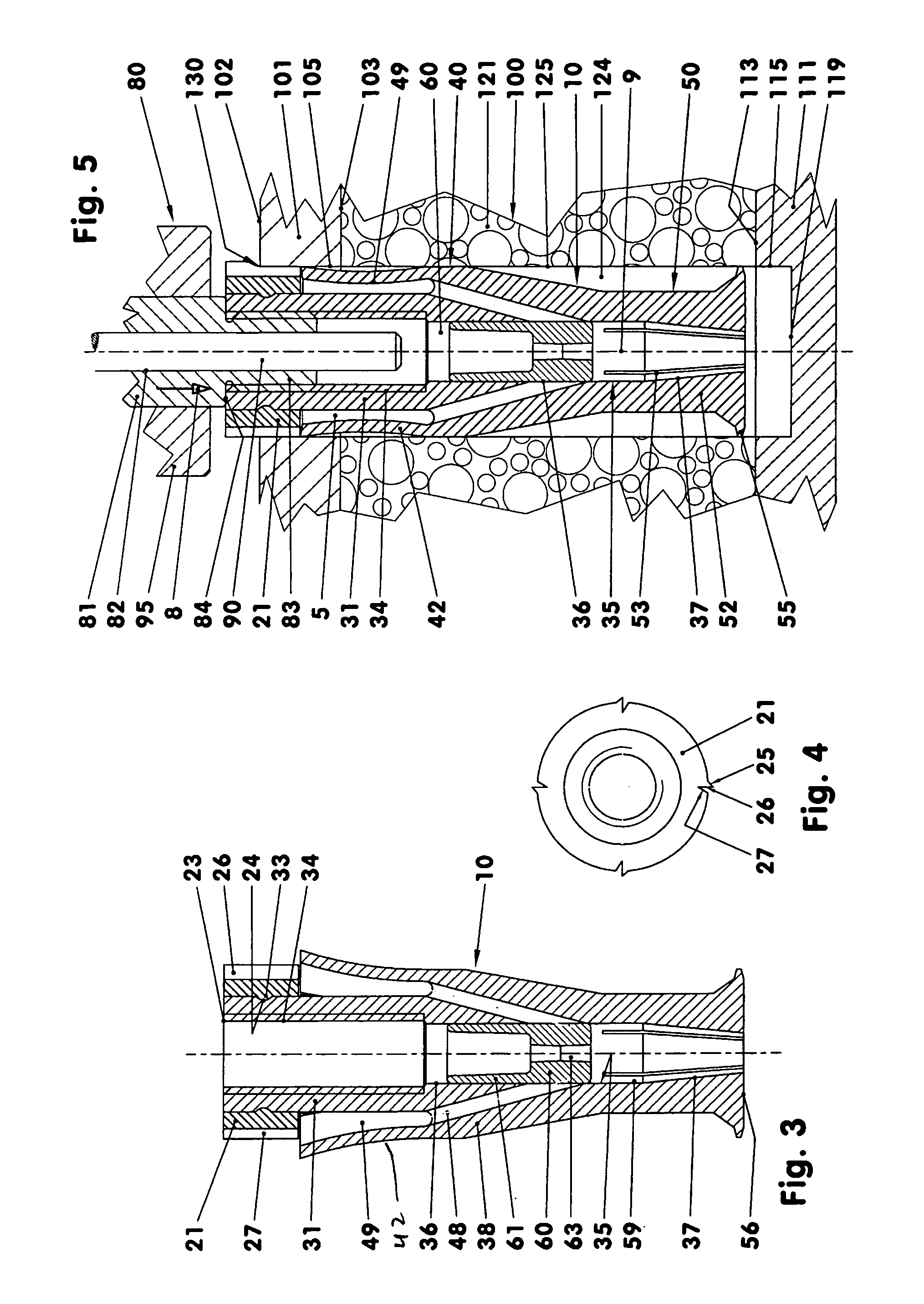Anchor for installation in lightweight construction panels and method for its installation with cement injection
- Summary
- Abstract
- Description
- Claims
- Application Information
AI Technical Summary
Benefits of technology
Problems solved by technology
Method used
Image
Examples
Embodiment Construction
[0029]The FIGS. 1 and 2 show an undeformed anchor. The anchor has an expansion body 10, which consists of three general sections 20, 40, 50. An upper section is a seating section 20 with a cylinder zone 21. The seating section 20 has a central threaded bore 34 for accommodating mounting elements such as screws. A central section is an engagement section 40, which in the shown embodiment includes for example four engagement elements 42. A lower section 50 is an expansion section, which also includes four clamping elements 52.
[0030]The anchor serves for example for mounting hardware to lightweight construction panels 100 without girders or solid inclusions, see FIG. 5. The lightweight construction panel 100 comprises two cover plates 101 and 111 and a support core 121 disposed therebetween. In the shown embodiment, each cover plate 101, 111 consists of a thin particle board. The support core 121 is for example a PV foam core. The cover plates 101, 111 have inner surfaces 103, 113 via ...
PUM
 Login to View More
Login to View More Abstract
Description
Claims
Application Information
 Login to View More
Login to View More - R&D
- Intellectual Property
- Life Sciences
- Materials
- Tech Scout
- Unparalleled Data Quality
- Higher Quality Content
- 60% Fewer Hallucinations
Browse by: Latest US Patents, China's latest patents, Technical Efficacy Thesaurus, Application Domain, Technology Topic, Popular Technical Reports.
© 2025 PatSnap. All rights reserved.Legal|Privacy policy|Modern Slavery Act Transparency Statement|Sitemap|About US| Contact US: help@patsnap.com



